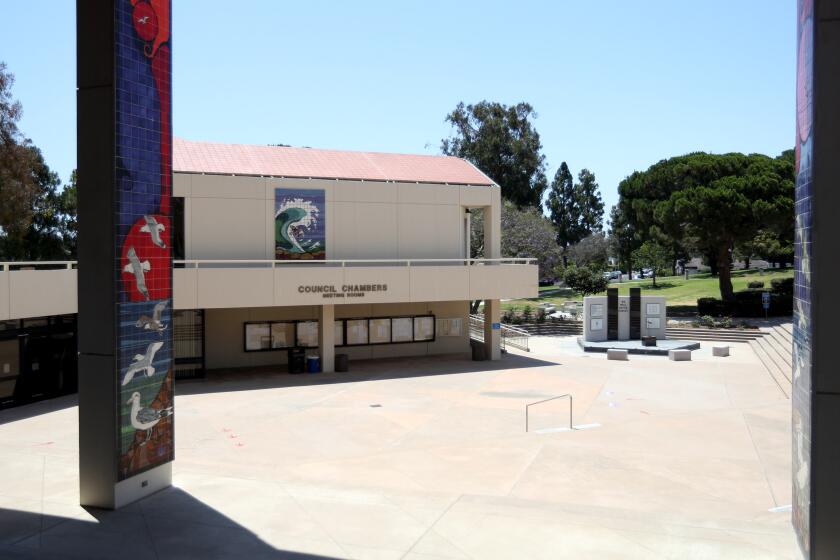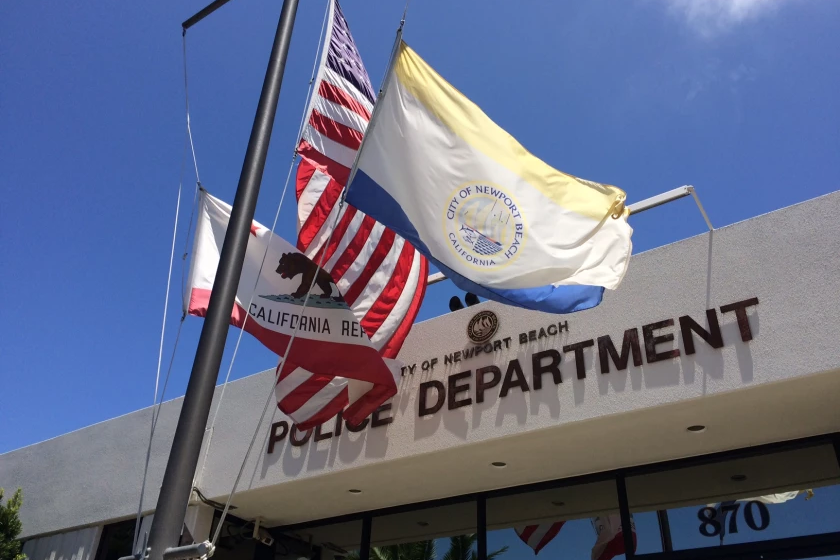Change makes coins optional
- Share via
NEWPORT BEACH — Those who drove into the lot by Peninsula Park last weekend might have thought they were seeing the results of a spectacular vandalism job.
The 40 meters that lined the parking lot for years had been beheaded, with unadorned metal poles left in their places. A closer look, however, showed that it was no criminal act. By the entrance of the parking lot, a sign pointed to a single electronic machine where drivers could pay for parking by coin or credit card.
The machine, installed Friday by the seaside park on B Street, is one of two in a new experimental program conducted by the city. Now, commuters to the Peninsula Park lot — as well as another on Superior Avenue and West Coast Highway, where a machine was installed Wednesday — won’t need to stock up on quarters if they want to leave their cars all day.
“We’re making it easier for the public so they can pay with credit cards rather than just coins,” said Mike Small, the parking meter supervisor for Newport Beach. “It’s just a trial right now. Who knows what will happen? If it makes it easier on everybody, we might [add more machines around town], but it’s not written in stone yet.”
The electronic meters in both lots charge $1 per hour daily between 8 a.m. and 6 p.m. Drivers punch in the number of their parking space before inserting coins or feeding their credit card into the machine.
Whether the new system will make parking easier remains to be seen. Some Balboa Peninsula residents who live near Peninsula Park expressed concern that not all drivers would be able to see the machine on the right side of the parking lot. Judy Smith, who has lived on the peninsula for four decades, said many of her neighbors simply parked without paying because they thought the city had eliminated the fees.
“Most people just thought they were getting a gift from the city,” she said.
Gay Wassall-Kelly, the editor of the Balboa Beacon newsletter, added that many drivers likely ignored the sign when they cruised into the lot.
“People are ... going to drive right past that thing,” she said. “If you drive down to the end of the parking lot, you don’t even see it or the signage.”
Small, however, said he expected residents to get used to the machines before long.
“We’ve all driven cars, and we’ve all parked cars, and we all know there’s the potential that we have to follow signage, and sometimes we have to pay for parking,” he said.
MICHAEL MILLER may be reached at (714) 966-4617 or at michael.miller@latimes.com.
All the latest on Orange County from Orange County.
Get our free TimesOC newsletter.
You may occasionally receive promotional content from the Daily Pilot.







